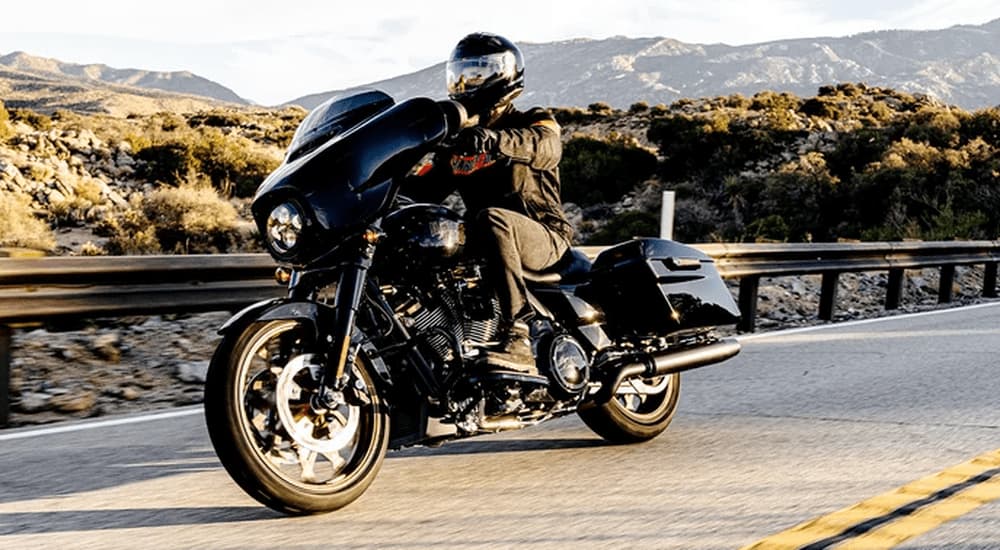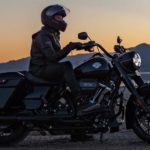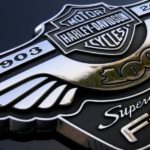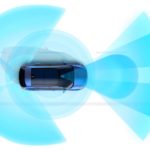Riding a motorcycle requires exceptional focus and awareness. Your safety and any opportunity to enjoy the ride rely heavily on your skills and ability to maintain control and respond to your surroundings. For example, riders are constantly looking ahead, watching traffic closely, and planning an escape to get out of danger should things go awry. This need for acute awareness often means keeping a close eye on intersections, being mindful of inattentive drivers, and constantly watching for debris or other obstacles in the road.
This balancing act becomes second nature as you spend more time in the saddle. Fortunately, motorcycle manufacturers like Harley-Davidson are doing everything possible to engineer confidence and make riding more intuitive. So how is Harley-Davidson accomplishing such a feat on best-selling models like the 2022 Harley-Davidson Street Glide?
Harley-Davidson’s RDRS Safety Enhancements is a suite of advanced technology that optimizes performance, traction, and handling by utilizing chassis control, powertrain technology, and electronic brake control. First introduced in 2020, the technology is available across the Harley-Davidson lineup and engineers confidence among riders across all skill levels. While the suite doesn’t eliminate the need to focus keenly on your surroundings, it can enhance your ride with technology that’s precise, reflexive, responsive, and invaluable in emergencies.
Drag-Torque Slip Control System (DSCS)
Harley-Davidson’s RDRS Safety Enhancements include features like the Drag-Torque Slip Control System and the Cornering Enhanced Drag-Torque Slip Control System. So, when does this technology play a prominent role in rider safety? Think about how a bike responds when you abruptly downshift into a lower gear or quickly decelerate on a slippery road. These situations often result in rear wheel slippage that can significantly threaten your safety and minimize or eliminate your control over the bike.
The Drag-Torque Slip Control System constantly monitors the rear wheel for slippage. When it senses a loss in traction, it adjusts the engine’s torque delivery to match the speed of the rear wheel with the road condition. The Cornering Enhanced version applies this approach to cornering, monitoring the bike’s lean angle to help you confidently navigate the motorcycle around corners.
Vehicle Hold Control (VHC)
One of the most demanding balancing acts you’ll experience in the saddle is stopping and accelerating on an incline. Stopping is relatively straightforward, but accelerating on a hill requires you to balance the brake with the throttle and clutch so that you have enough speed to move forward. Too little acceleration and your bike can roll backward, while too much can lug or stall the engine.
Harley-Davidson remedies the situation with Vehicle Hold Control, which allows you to focus on coordinating the throttle and clutch on an incline. You can engage the feature by firmly gripping the front brake lever or rear brake foot control once the bike is completely stopped. When engaged, the system holds the rear brake pressure even when you release the brakes. This pressure keeps the bike in place so you can focus on maintaining control as you accelerate off the incline. This acceleration disengages the feature, as will applying and releasing either brake control.
Cornering Enhanced Features
Harley-Davidson’s RDRS Safety Enhancements include several cornering-specific features. What does this mean? This cornering technology recognizes that many motorcycles have different-sized tires at the front and rear, which means the wheels rotate at slightly different speeds when the bike leans into a turn. In these instances, the tire patch that makes contact with the road, known as the traction patch, also changes. Harley-Davidson’s cornering-specific technology accounts for these changes, improving the bike’s performance and handling when turning or cornering.
Cornering Enhanced Antilock Braking System (C-ABS)
You’re traveling along a straight stretch of road when you’re forced to quickly apply the brakes to avoid a hazard ahead. The antilock brakes on your bike help you maintain control in this urgent situation by operating independently between the front and rear brakes to keep the wheels from locking. But what happens when you have to apply the brakes on a corner?
Harley-Davidson’s Cornering Enhanced Antilock Braking System looks at the bike’s lean angle to determine the appropriate brake pressure to prevent or limit wheel slippage. Then, the technology calculates the available traction and adjusts the brake pressure to preserve the bike’s grip on the road. In turn, you have more control over the bike as it navigates the apex of the curve and maintains its intended path. The system also reduces the risk of low-side crashes, which can happen when too much brake pressure is applied while cornering.
Cornering Enhanced Electronic Linked Braking (C-ELB)
One of the fastest lessons a new rider learns is never to grab too much front brake. The front brake on a motorcycle provides 60 to 80% stopping power, making it incredibly effective. However, it also means grabbing too much front brake can send you flying over the handlebars in the blink of an eye.
Electronically linked brakes combine the front and rear brakes to give the rider better braking performance and overall control. Harley-Davidson’s Cornering Enhanced Electronic Linked Braking system takes this a step further, making the bike more responsive to improve stability and handling when stopping. So, how does it work? By constantly monitoring how you’re applying the brakes.
For example, when you’re braking heavily, the system automatically links the brakes to enhance brake pressure. However, if you’re traveling at low speeds and only lightly apply the brakes, the system knows to reduce or eliminate the linkage so that the bike’s performance and your control aren’t threatened. Additionally, the system looks at the bike’s lean angle, allotting the appropriate portion of brake pressure between the front and rear brakes as you navigate a corner.
Cornering Enhanced Traction Control System (C-TS)
Traction is vital to your safety on the road, so Harley-Davidson does everything to optimize that traction, whether traveling in a straight line or navigating a winding backroad. For example, the Cornering Enhanced Traction Control System prevents the rear wheel from spinning as you accelerate. Like the other cornering-specific features, the system accounts for the bike’s lean angle to balance slide slip and torque to control the amount of power delivered to the rear wheel.
The system gives riders a choice between Standard Mode and Rain Mode, or you can turn the feature off. Many riders leave the feature engaged in slippery conditions or when traveling new roads. Why? Because rain and unexpected changes in the road surface can compromise traction in an instant. With the system engaged, you can ride with confidence knowing it’s working diligently by sending power to the rear wheel to improve traction and help you maintain control.
Enhancing Your Ride
Harley-Davidson’s RDRS Safety Enhancements suite is genuinely remarkable. The technology engineers confidence and gives you peace of mind in the saddle without compromising the thrill of the ride. Cornering-specific features like the Cornering Enhanced Traction Control System and Cornering Enhanced Electronic Linked Braking accomplish this, especially when navigating winding roads with hairpin turns.
Harley-Davidson’s efforts to constantly improve your ride and experience in the saddle are at the heart of this collection. This technology doesn’t overshadow or limit a bike’s capability but acts as a safeguard that only intervenes as needed in urgent situations. Because of this, the RDRS Safety Enhancements collection becomes a must-have and a vital tool for riders of all skill levels who appreciate every opportunity for a safer and more enjoyable journey.




